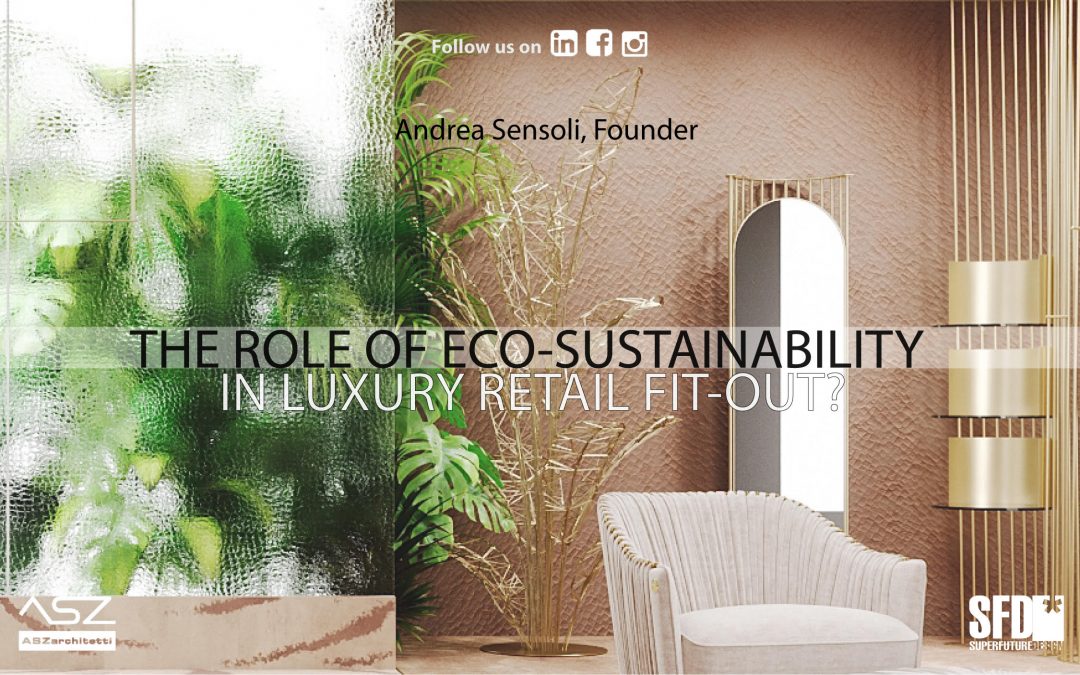In today’s world, clientele and customers believe in choosing brands that are an extension of their social and even political beliefs. With the advent of social media, the concept of sustainability practices is gaining traction. But that’s all it looks like so far – a concept. Customers are in constant pursuit of companies that implement this concept in their practices and embody it as part of their design philosophy. In terms of this, the retail and design industry comes under the most scrutiny from customers, who are willing to pay a premium for the satisfaction of having played their role.
Andrea Sensoli mentioned his concerns about the fashion industry’s initial reluctance to adopt sustainable practices, “I was hoping to bring in a lot of automation in my projects. However, when I actually started working in the luxury retail business, very few companies (if any) were actually implementing sustainable practices, which I couldn’t understand. Even small things like software to help monitor energy consumption or light controllers were rare among the industry.”
With access to knowledge about brands’ business practices and global standards of sustainability, customers can make their voices heard and use their newly-gained power. In an era where brand loyalty is at an all-time low, they will have no trouble leaving behind ‘favourites’ for brands that implement better practices. Companies are starting to realize this and are finally coming around to take the necessary steps that bring a positive change.
How Are Luxury Retail Brands Meeting Sustainability Goals?
In the luxury retail industry, companies are leaning towards a sustainable approach. Andrea Sensoli explained, “Recently, there have been a few steps in the right direction, as almost every brand began using LED lights on low voltage bus controllers. Regardless, this is still a long way from a good sustainable approach that luxury shops can achieve.”
Nonetheless, it doesn’t imply that brands are nonchalant about embracing sustainable methodologies. In fact, many brands are concerned about including more sustainable practices, and the store fit-out is an important part of it. However, this raises questions about how brands will communicate this aspect of their ethics? Here, the showroom acts as a genuine tool that sends a message. In the age of eCommerce and convenience of online selling, physical retail spaces do more than offering a space for customers to look at their product lineup. Rather, it generates brand awareness, encourages engagement, and develops fidelity. Hence, it’s all about how well customers communicate. According to Andrea Sensoli, companies should leverage effective communication about their sustainable practices.
He emphasizes that while savings on stores’ electricity bills are marginal in the entire process, communicating with customers in-store isn’t.
How Will Interior Design Reduce a Company’s Carbon Footprint
Andrea Sensoli explains that making changes like following LEED standards in design, procurement, site-works, and equipment operation, brands bring a positive change in interior design which ultimately reduces their carbon footprint. Of course, let’s not forget that it’s not only about how companies are releasing lesser carbon dioxide, but the message they are spreading.
After all, the physical retail space is the first point of face-to-face interaction between a brand and customer, and companies need to make a stellar impression on customers looking to go the sustainable route. As SUPERFUTUREDESIGN* worked on the concept design of Damac for Roberto Cavalli’s mainline, they were able to introduce subtle messages of environmental awareness into the shop. They simplified the layout for minimalist application, combining a general sense of “limited construction”, enhanced with the use of natural finishing on the walls, greater incorporation of natural light, and the addition of lush natural, green aspects as part of the design.

